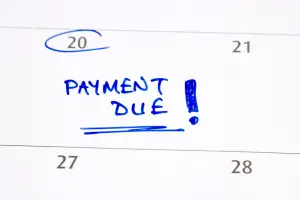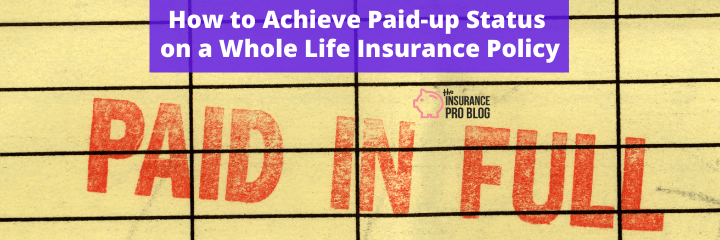Whole life insurance paid-up status occurs when you do one of two things. First, you reach paid-up status when you make the required number of premium payments stipulated in the insurance contract. Second, you can electively create a paid-up whole life policy by triggering the reduce paid-up nonforfeiture benefit of a whole life policy.
How Paid-up Whole Life Insurance Works
Paid-up whole life insurance means you no longer have to pay premiums on the policy. The death benefit will remain in force. Additionally, the policy will normally continue to earn dividends if it is a dividend-paying whole life policy.
Reaching paid-up status provides the peace of mind knowing that you can keep your life insurance and will not need to pay any future premiums.
You can continue to take loans against a paid-up whole life policy. You can also withdraw any non-guaranteed cash value from a paid-up policy. Your paid-up whole life policy will also continue to enjoy all of the tax benefits available to whole life policies that have not reached paid-up status.
Reaching Paid-up Status
All whole life policies have a premium payment period. This is the number of years the policy owner must pay premiums before achieving paid-up  status. The whole life policy will specify this period in the contract and the insurance company cannot change this period after issuing the policy. Once the policy owner pays premiums for the entire number of years specified under the contract, the policy becomes paid-up and requires no further premiums to remain in force.
status. The whole life policy will specify this period in the contract and the insurance company cannot change this period after issuing the policy. Once the policy owner pays premiums for the entire number of years specified under the contract, the policy becomes paid-up and requires no further premiums to remain in force.
Common premium payment periods are:
- To age 100
- To age 120
- To age 65
- 10 Years
- 20 Years
Longer premium payment periods have lower annual premiums for the same death benefit amount. For example, you might be looking at a $1 million whole life policy that requires a $15,000 per year premium if paid-up status occurs at your age 100, but a policy with the same death benefit that reaches paid-up status after only 10 years might have an annual premium requirement of $45,000.
Whole life policies with shorter premium payment periods will tend to accumulate more cash value in earlier years than policies with longer premium payment periods.
Using the Reduce Paid-up Feature
Another option to achieving paid-up status with a whole life policy is using the reduce paid-up nonforfeiture benefit of a whole life policy. This feature of available on all ordinary whole life policies issued in the United States.
The feature allows the policy owner to create a paid-up policy by reducing the death benefit to an amount supported by the cash value accumulated in the policy. The amount of the death benefit reduction depends on the age of the policy and the amount of cash surrender value it presently has.
Can I Cash in a Paid-up Policy?
 Yes, you can cancel a whole life policy that achieved paid-up status. If you do this, the insurance company will send you a check for the cash value of the whole life policy on the day you requested policy termination. You may want to think twice before cashing in such a policy, as this decision is permanent and the paid-up policy requires no future premiums.
Yes, you can cancel a whole life policy that achieved paid-up status. If you do this, the insurance company will send you a check for the cash value of the whole life policy on the day you requested policy termination. You may want to think twice before cashing in such a policy, as this decision is permanent and the paid-up policy requires no future premiums.
Will My Paid-up Policy Pay the Same Death Benefit my Non-Paid-up Policy?
Assuming the payable death benefit is the same, yes your beneficiary will receive the death benefit from a paid-up policy just the same as he/she would receive a death benefit from a non-paid-up policy. Achieving paid-up status does not alter the way the insurance company handles a claim/pays a death benefit.
There is also very little else that changes with a whole life policy once achieving or transitioning to paid-up status. In some cases, insurers might pay a slightly different dividend to policies that are paid-up.
Bottom Line
Paid-up status is a coveted feature of a whole life policy. Having a death benefit that requires no future premium payment appeals to a larger percentage of the population and this is a unique feature of whole life insurance.

